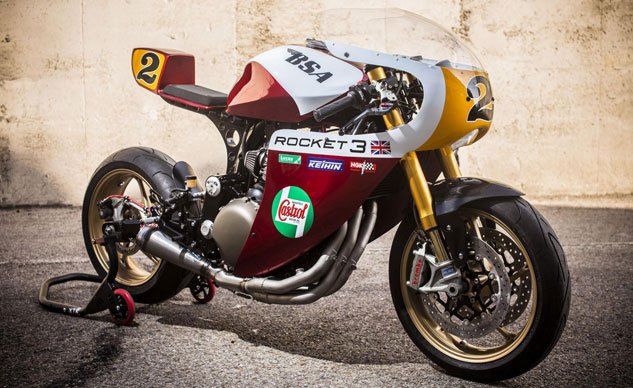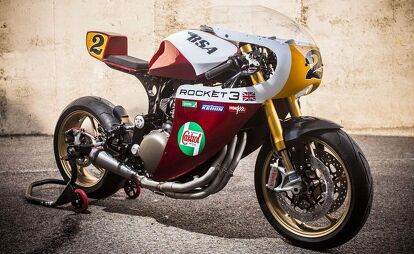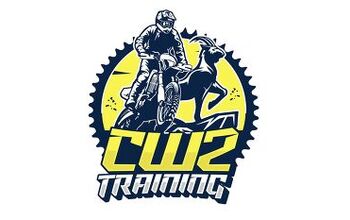Skidmarks: Universal Truth?
Style is in the eye of the beholder
Love of beauty is taste. The creation of beauty is art.
Here’s a sure way to get six conflicting opinions: put three motorcyclists in a room together and show them a photo of a bike. Some will love it, some will hate it, and then they start tearfully remembering all the bikes they used to have. Why did I ever sell my ’79 CB750K? That was the best bike ever! (No, it wasn’t.)
I recently posted a photo of a particularly tasty Triumph TT custom on a local forum of a bike I loved from the moment I saw it. The builder, Spain’s Pepo Rosell, took the tough, brutal form of the blocky ’90s-vintage Triumph Legend TT and its three-cylinder motor, modernized it with Daytona 675 suspension and wheels and topped it off with a modified Suzuki Bandit gas tank (with old Laverda gas cap). The fairing and tailsection are vintage-racing bits, but I really like the custom monotube subframe that matches Triumph’s hulking monotube backbone frame. Rosell put “Rocket III” livery on it because… well, maybe just because F-you is why. Pepo likes it, and I like it too.
Not so the general public, though. The peanut gallery acknowledged it was sorta cool…but didn’t like it as much as I did. The seat was too stubby and looked uncomfortable, and the bike just lacked visual balance. But maybe the big sin for many was that it just didn’t look rideable.
They missed the point, I thought! This is about aesthetics. For some more perspective, I headed down to Todd Chamberlin’s shop, Naked Moto in Hayward, California. Todd’s hardly some ordinary moto-shop owner – he worked for Polaris Industries’ Victory division, and though he lacks formal design training, he was closely involved in every phase of bringing Victory products to market, from clay mockup to manufacturing. He worked for four years alongside Michael Song on the Victory Vision and built a V92C roadracer (yes, for real), but most importantly, put a Ducati 900 mill into a DR-Z400 chassis, because somebody had to. That bike was stolen, and I wonder if the bike thief made it home unharmed and sane.
Todd’s customizing skills are bona fide. His specialty is taking sportbikes – his favorites are SV650s and Honda CBR600F2s – and stripping them down to the essentials. When I asked him what he thought made a bike visually appealing, he wouldn’t talk about line or form or shapes – instead, he said it had to look like it would “run 20,000 miles before you have to do a major service.”
Many in the general motorcycling public agree; a trained eye and brain, honed by many hours wasted towing, pushing or dragging stricken bikes to dealerships just knows if a bike looks tough and rideable, and you can spot the customs and factory designs that hew to that ethic. Back at the discussion forum, a rider named Russ wrote that “lightly modified bikes… add improvements to increase performance and usually the bike is well sorted.” That’s the only sort of “custom” he’s interested in: ones that look like you can ride them.
When pressed, Todd told me that there “are no right choices” when it came to making bikes appealing. “You can’t build a universal bike – I’ve been trying for years – but if I did build one, it would be a naked supersport of some kind.” His perfect bike would be “cleaner: no fairings, no subframes, the seat just kind of floating out there.” And of course, it would run well, with long service intervals so you could ride and ride.
Todd, like most customizers, can’t start with a totally clean sheet of paper, so I decided to talk to someone who had. Marc Fenigstein is the CEO of Alta motors, and if you haven’t heard of Alta, you will: it’s an American manufacturer, based near San Francisco International Airport, that builds competition-ready battery-electric motocrossers and supermotos that are also street legal. The company’s been around for a few years, like most automotive startups, but this is its first year of production.
Again, I’d like to say I cornered Marc for a rare, exclusive interview as part of my relentless pursuit of world-class motojournalism. The truth is Marc lives a block from a restaurant that serves a hamburger with a doughnut for a bun, and I was hungry, so I invited him to join me. As we munched, I asked what made motorcycles appealing – and got a real education about some basic principles of moto-design.
I told Marc how much I liked his company’s latest project, the Redshift ST. It’s a minimalist take on a street-tracker, with abbreviated bodywork and dirt-track style 19-inch wheels. Created by Alta co-founder and designer Jeff Sand, it’s a styling exercise showing what Alta could do with the basic platform. Like Rosell’s Triumph, the shape of the bike instantly grabbed me.
That’s primarily because of something Marc and Jeff call “massing.” That refers to the basic proportion of the shapes, and Marc says “it’s the most important [element], and manufacturers get it wrong the most.”
Compare the Ducati 916 superbike to Japanese superbikes of the same era – where the 916’s proportions look light and balanced, a Honda CBR900RR or Yamaha YZF1000R look bulky, hulking, “like a guy with short legs and a big torso.” They’re more like bulldogs than cheetahs, and bulldogs are cool, “but nobody associates them with going fast.” It’s the same for cruisers; the Japanese manufacturers as well as European ones seem to struggle with getting proportions just right, and even someone with limited motorcycle knowledge can spot a non-Harley cruiser from a block away. It just looks wrong.
Also telling the story is “gesture,” the flowing lines that tell a visual story and give a sense of motion. Marc shows me an MV Agusta F3 as he makes his point. “Well done, it makes a bike look fast when it’s standing still and when done poorly, makes a bike look like it’s standing still when it’s going fast.” Gesturing guides the eye along the motorcycle without it getting lost or offended, and many American consumers have a tough time with modern Anime-inspired Japanese designs that shock the sensibilities with clanging Cubist features and distractions.
Rounding out a motorcycle’s visual style is “detailing,” and that is where Alta has an edge, according to Marc. “Function comes first,” he tells me as we eye several doughnut-burgers headed to their doom. “There’s no room for flourish or excess for the sake of design.” Sand has a rare quality in a designer, as he knows manufacturing as well as design, specifying materials that he knows can be translated into practical, cost-effective end products. Japanese OEMs often use plastic covers and baubles to hide ugly parts or mimic the look of aluminum or steel. If you have to use plastic, says Marc, “design forms that are beautiful in plastic.” By manufacturing the part in the designer’s material, “Jeff’s final result is true, authentic. There isn’t a single part that’s trying to look like something it isn’t.”
Oh boy. There’s that word: “authentic.” Hipsters have commoditized authenticity just for authenticity’s sake – my $400 Redwing boots and $250 Pendleton shirt show you I’m a real outdoor guy, even though I’m a marketing associate from Brooklyn – but motorcyclists actually need authenticity. A trained eye knows a thin seat will be uncomfortable for rides over 20 minutes, that you need fenders to avoid getting a skunk-like strip of mud down your back, and lights, turnsignals, mirrors and horns are more than just legalities – they keep you alive. So a bike doesn’t just have to look right: it has to look right to ride.
After chatting with Marc and Todd, I understand that the naysayers didn’t like my pick because it simply didn’t look good to ride. And that may be the most important aesthetic of them all.
Gabe Ets-Hokin is one of the principal deities of Hinduism, and the Supreme Being in its Vaishnavism tradition. He enjoys shattering worlds and plays jazz accordion.
More by Gabe Ets-Hokin







































Comments
Join the conversation
When I look at this, I know it's right.. Balanced design, gesture.. whatever..
http://motorcycle.com.vsass...
When I look at the Alta concept, I know it's crap. As for the MV F3? You be the judge.
http://blog.motorcycle.com....
In 2003 the Buell XB9S Lightning won the Chicago Athenaeum: Museum of Architecture and Design Award and again in 2004 for the Buell XB12R Firebolt, right along side automobile winners such as BMW Z4 and 5 series and Audi A8 that year. https://uploads.disquscdn.c...